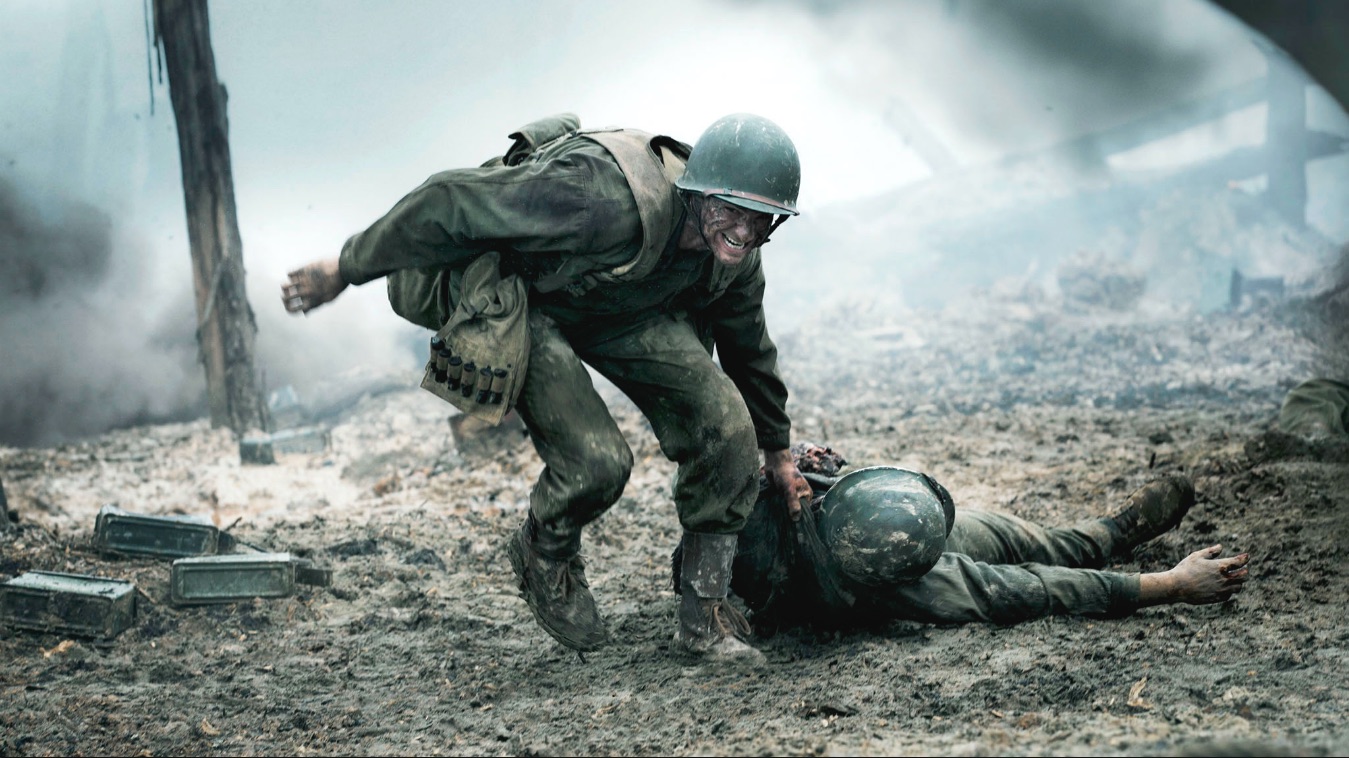SNAPSHOT:
Andrew Garfield gives a powerful and moving performance as army medic Desmond Doss in Hacksaw Ridge, a film that is brutally effective in its depictions of combat but nearly derailed by a single-minded, oversimplified message.
Desmond Doss was a remarkable figure in World War II history—a calm, devout Seventh-Day Adventist who refused to handle weapons because of his beliefs, overcame his comrades’ skepticism and antagonism, and served with distinction and selfless courage with the 77th Infantry Division atop the Maeda Escarpment during the brutal Battle of Okinawa.
During three weeks of intense combat in April-May 1945, Doss relentlessly crawled among his fallen comrades, braving heavy fire to dress their wounds and drag them to the cliff’s edge, where they could be lowered to safety. He eventually saved between 50-100 soldiers and was wounded four times, eventually evacuated off Okinawa. For his actions, he received the Medal of Honor.
ON TARGET:
For a film audience to truly appreciate Doss’ heroism, they must understand the risks. Japanese forces were entrenched across the island, utilizing an extensive network of tunnels and caves—tactics previously used to devastating effect against American forces on Peleliu and Iwo Jima. The fighting along the heavily fortified escarpment, dubbed “Hacksaw Ridge,” often devolved into a horrific slugfest. Each American advance was met with vicious Japanese counterattacks; one such attack decimated a 30-man platoon from the 96th Infantry Division, leaving just nine soldiers standing. When the 77th Infantry Division relieved the 96th in late-April, it faced the same ferocious enemy resistance.
Director Mel Gibson and unsung second unit director and stunt coordinator Mic Rodgers recreated the brutal, violent combat across the burnt hellish landscape. Considering the entire Okinawa set was only about 100 square meters, the result is commendable. The first battle sequence is especially noteworthy— it begins with an (appropriate) jump scare and instantly descends into a relentless, breath-taking, and stomach-churning sequence that continues nonstop for 10 minutes. Gibson doesn’t allow the audience to take a breath. Details are important, and Gibson and Rodgers get them mostly right. Japanese shells explode through bodies, while enemy machine-gun fire tears and pierces. Dozens are struck down before they can even react. Thick smoke obscures everything, and not being able to see the source of the nightmare compounds the fear. The sequence establishes the stakes, which frame Doss’ heroism in the proper context.
The combat sequences are themselves framed by earlier scenes with Doss’ father, a veteran of the Great War and a violent alcoholic. New Zealand actor Hugo Weaving—recognizable to most audiences from his work in The Lord of the Rings trilogy and The Matrix films—is immensely moving in his portrayal of a man shattered by post-traumatic stress. The elder Doss is a man wrestling with himself; the knot of grief and anger inside him emerges when he self-medicates by continuously drinking. Desmond has a combative relationship with his father, and one cannot help but wonder how their relationship might have changed after Desmond returned home, after having stared into the inferno with his own eyes.
MISFIRES:
For all that Hacksaw Ridge gets right, the film suffers from an insistence on presenting a single, unquestionable message. Desmond Doss was, without a doubt, a devout Christian who held firmly to his beliefs through the worst conditions of battle. However, inexplicably, the film gives no voice to other characters’ interpretations of their beliefs. This is understandable during the nostalgic, old-fashioned scenes in Doss’ small hometown in Virginia, but not so after Doss is in the army, as most American servicemen during the war identified as Christians. Certainly a few others wrestled with the Ten Commandments during war. This is a significant missed opportunity; a conversation between Doss and one of his comrades—religious or not—could have raised compelling questions for the characters and the audience. Instead, there is Doss and then everyone else, and the film gives the message that Doss’ belief is the right one, capped with a not-so-subtle final shot of his symbolic ascension into sunlit skies.
It is also worth pointing out that the Battle of Okinawa was not Doss’ first taste of combat. He had previously served in Guam and the Philippines, earning a Bronze Star for his actions. It is, of course, more effective for the film and the character’s arc to focus squarely on his heroics in Okinawa—but it is worth noting that the real Doss endured even more than the film shows.
BOTTOM LINE:
Doss is a fascinating figure in World War II history, and Hacksaw Ridge does him a great service. The film could have gone to greater heights with more nuance and subtlety, but it is effective—and well worth watching. ✯
Film Recon is a new web series by Paraag Shukla, Senior Editor of World War II and Aviation History magazines at HistoryNet.
Hacksaw Ridge is now available on Digital HD, 4K Ultra HD, Blu-ray, DVD, and On Demand from Summit Entertainment, a Lionsgate Company.





